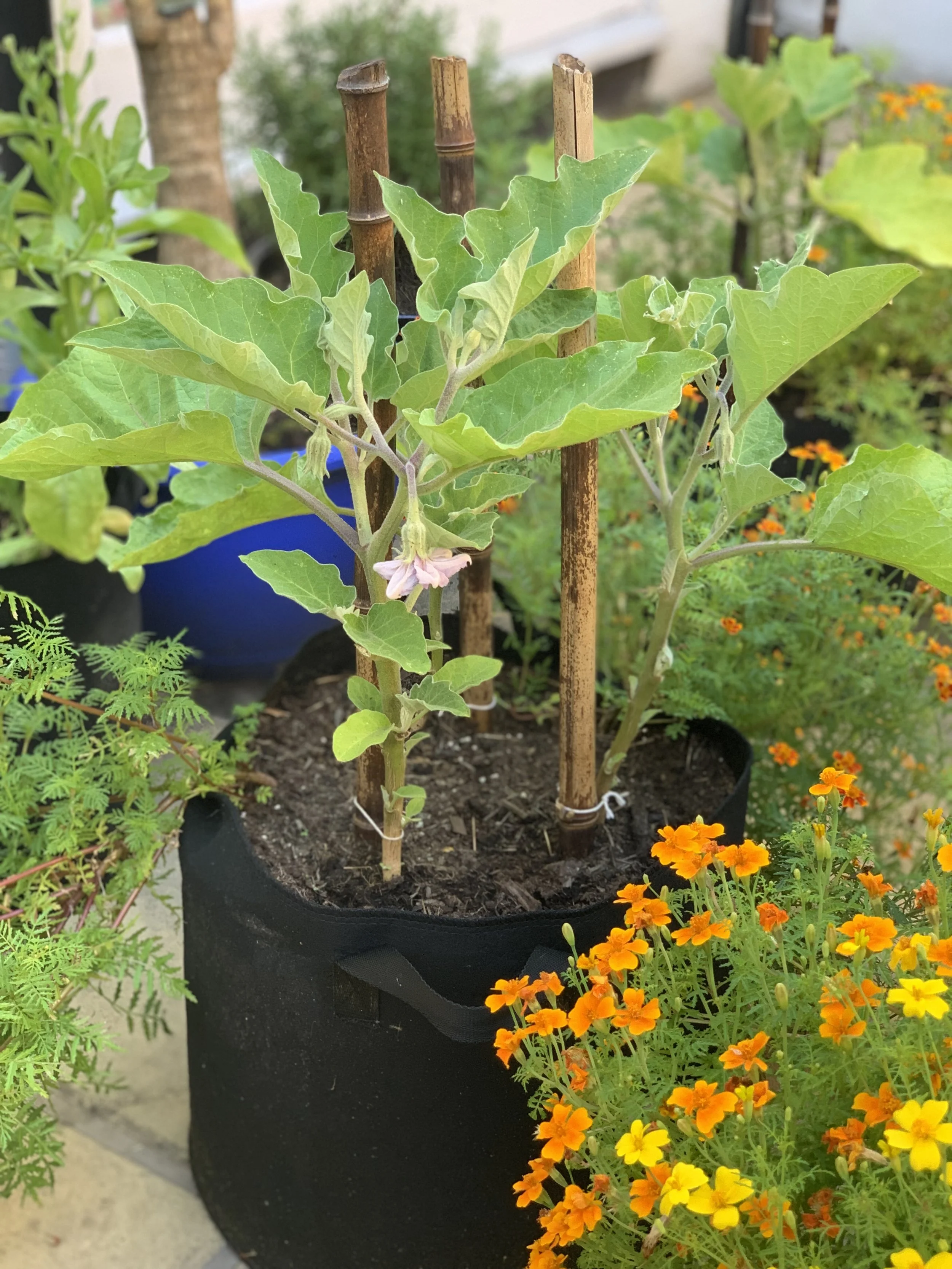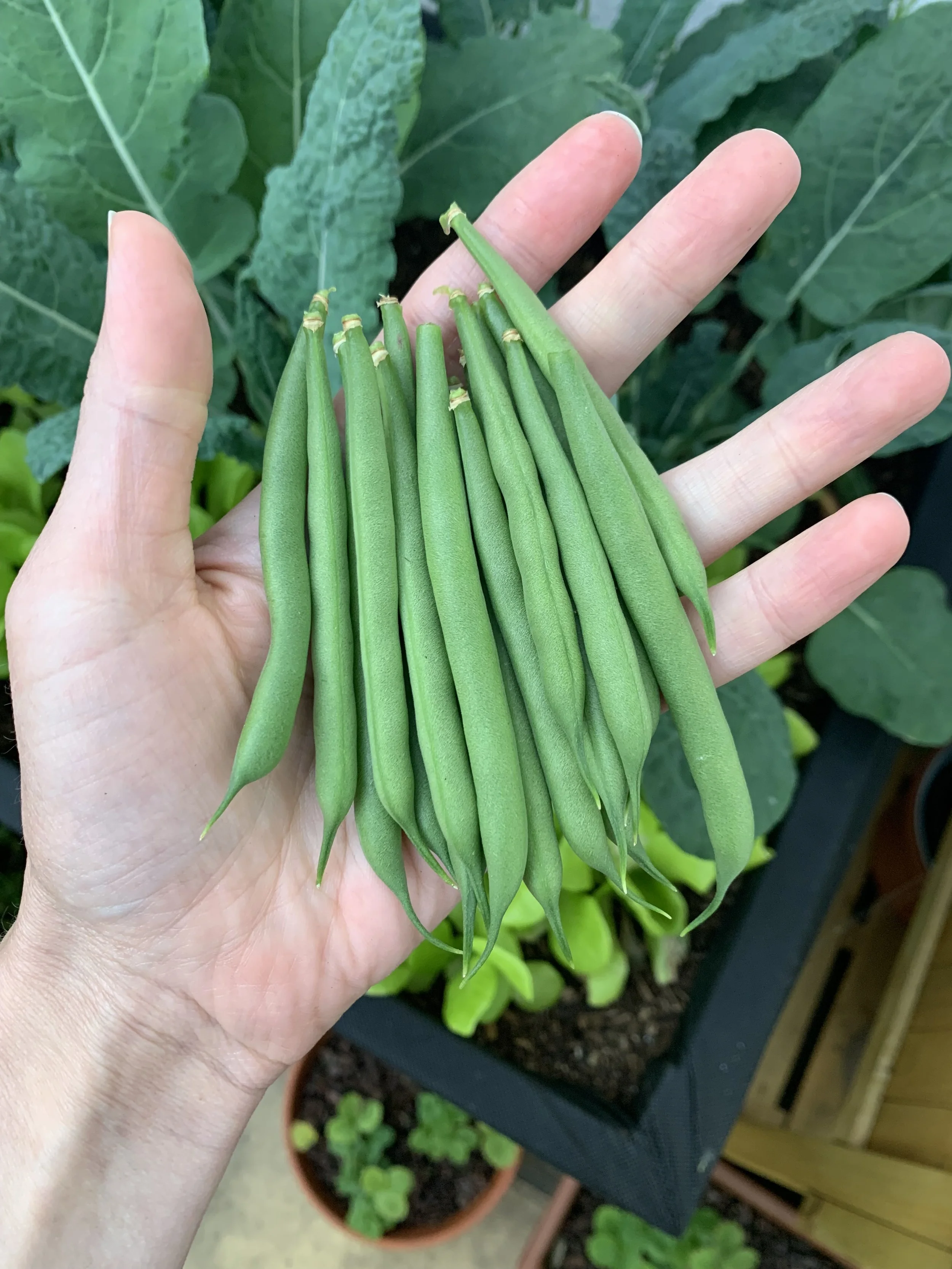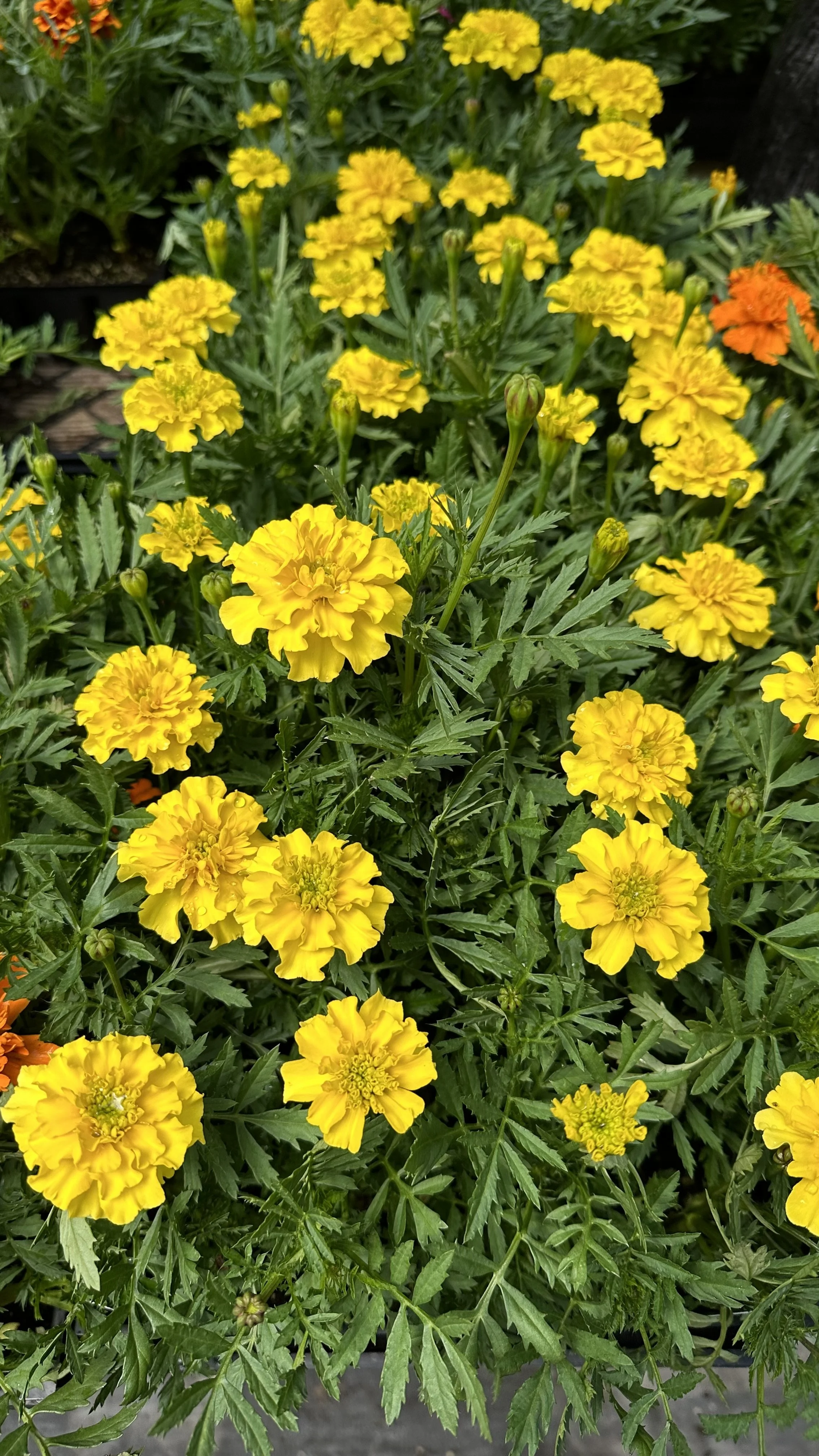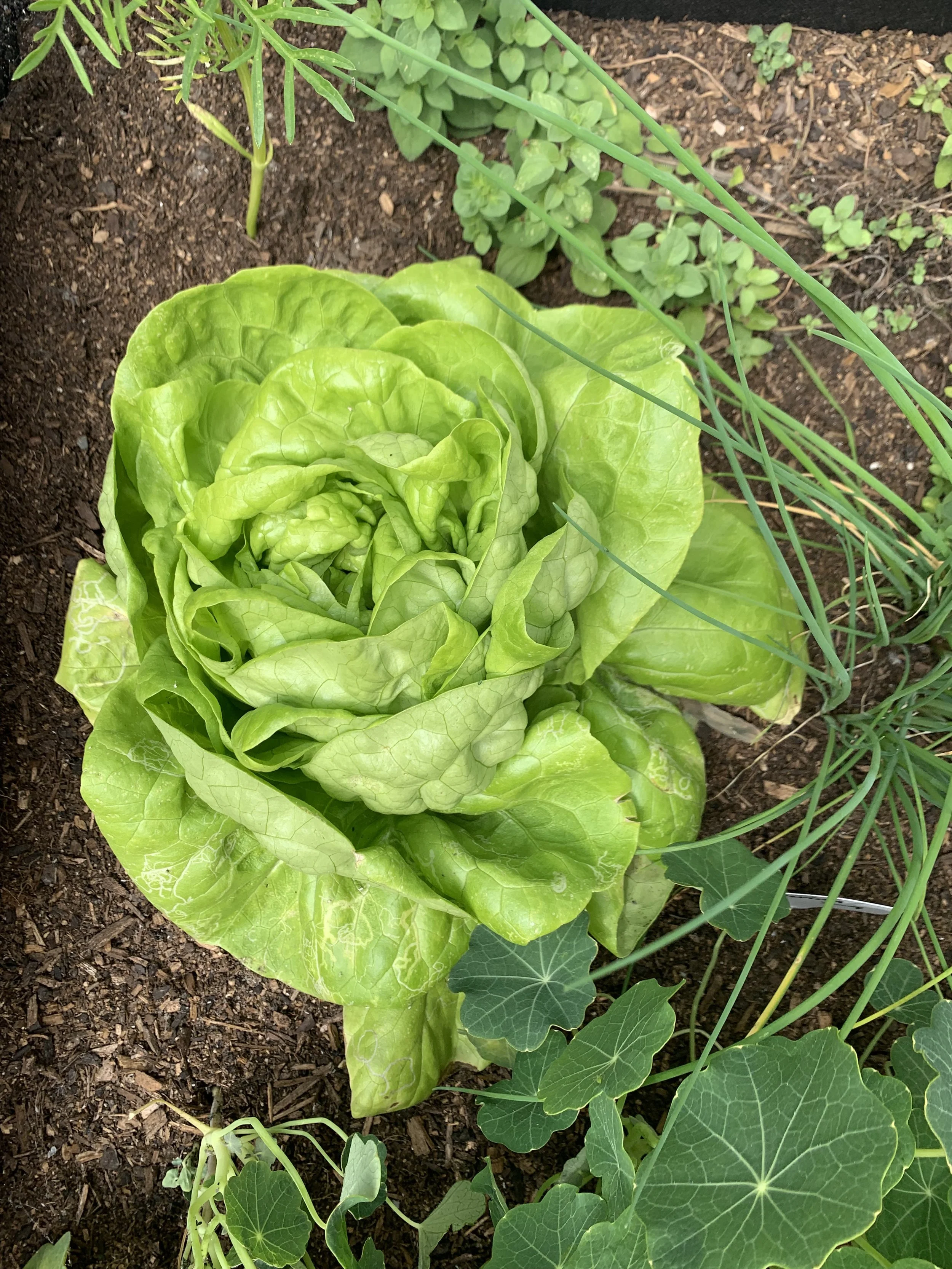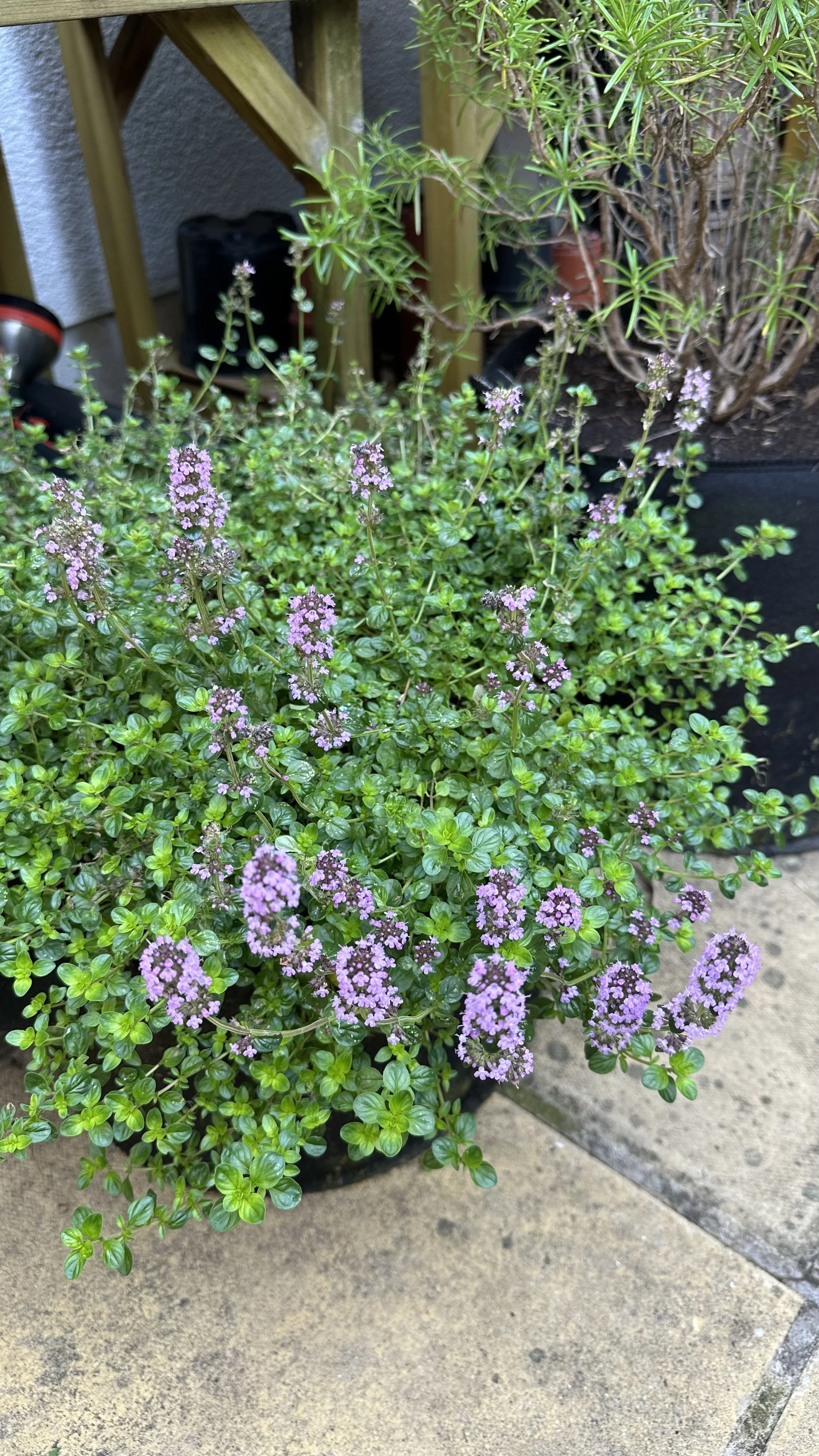The Best Eggplant Companion Plants
This website is reader-supported - thank you! This post may contain affiliate links. As an Amazon Associate, I earn from qualifying purchases at no extra cost to you.
Gardening is as much an art as it is a science. Among the myriad of techniques that can elevate your gardening game, companion planting stands out as one of the most intriguing and beneficial.
By understanding the symbiotic relationships between certain plants, gardeners can create thriving ecosystems that boost yield, deter pests, and beautify spaces. And when it comes to the majestic eggplant—with its deep purple hue and delectable taste—the choices of companion plants play a pivotal role in its journey from seed to table.
Dive into our comprehensive guide on eggplant companion planting, where we'll uncover its myriad benefits, best plant allies, potential foes, and answer all your budding questions.
To learn more about vegetable companion planting, check out my guides:
Companion Plants for Cauliflower: Attracting Beneficial Insects
Benefits of Companion Planting Eggplant
Companion planting is more than just placing two plants side by side; it's about understanding and leveraging the unique characteristics of each plant to create a more balanced and productive garden.
When it comes to eggplants, the benefits of mindful companion planting are manifold.
Boosting Beneficial Insects and Pollinators:
Attracting Predatory Insects:
Some plants, like marigolds or nasturtiums, emit a strong scent that draws in predatory insects.
These insects, such as ladybugs and lacewings, actively feed on pests that would otherwise harm the eggplant.
Luring Pollinators:
Flowering companions can be a magnet for bees, butterflies, and other pollinators.
A higher presence of pollinators ensures better fruit setting for eggplants and an overall increase in yield.
Soil Enrichment and Health:
Nitrogen Fixation:
Leguminous plants like beans have a symbiotic relationship with bacteria in their root nodules that can fix atmospheric nitrogen.
This process enriches the soil and provides essential nutrients for neighboring plants, including eggplants.
Organic Matter Contribution:
Decomposing roots, leaves, and other plant matter from companions can enhance the organic content of the soil, making it richer and more fertile.
Natural Shade and Ground Cover:
Protecting Soil:
Taller plants can provide shade, reducing water evaporation from the soil. This ensures consistent moisture levels which eggplants thrive on.
Ground Coverage:
Low-growing companion plants, like certain herbs or ground cover flowers, can suppress weed growth, maintaining a more controlled garden environment for eggplants.
Natural Deterrence of Pests:
Breaking Pest Cycles:
By diversifying plantings and not placing all eggplants (or other nightshade family members) together, you can disrupt the life cycles of pests such as Colorado potato beetles and flea beetles, making it harder for them to infest and spread.
Optimized Garden Space Use:
Vertical and Horizontal Growth:
Companions that grow vertically, like climbing beans, can be paired with horizontally growing eggplants.
This ensures efficient utilization of garden space, both upwards and across.
Sheltering and Support:
Sturdier plants can offer support to eggplant branches laden with fruits, ensuring they don't sag or break.
A well-thought-out companion planting strategy for eggplants can lead to a range of benefits. From improved soil health and reduced pest threats to efficient space utilization and higher yields, these advantages highlight the importance of understanding and implementing companion planting in your home or vegetable garden.
Learn more about starting a vegetable garden with my guide: What is a Kitchen Garden?
The 7 Best Eggplant Companion Plants
Eggplants, with their glossy purple fruits and lush green foliage, thrive when surrounded by certain plants. Pairing them wisely not only boosts their growth but also offers protection against common pests.
Bush Beans and Green Beans:
Why:
Beans, especially bush and green varieties, are leguminous plants known for their nitrogen-fixing abilities.
As they grow, beans improve soil fertility by increasing its nitrogen content, a nutrient essential for eggplant growth.
Here are the bean seeds I recommend growing:
Basil:
Why:
Basil's aromatic nature deters many pests including aphids.
To learn more about growing basil, check out my guides Propagate Basil Like a Pro, The Best Basil Companion Plants, and How to Harvest Basil Seeds the Right Way.
Here are the basil seeds I recommend:
Nasturtiums:
Why:
Similar to marigolds, nasturtiums can deter various pests due to their strong scent.
They are particularly effective against aphids and can also lure predatory insects.
Learn more about using nasturtiums as companion plants with our guide: Utilizing Nasturtium Companion Plants for Natural Pest Control.
Here are the nasturtium seeds I recommend:
Mint:
Why:
Mint's strong aroma can deter various insects, including ants and aphids.
However, mint can be invasive, so it's advisable to plant it in containers placed near eggplants.
Learn more about growing mint in our guide How Often to Water Mint.
Here are the mint seeds I recommend:
Spinach and Lettuce:
Why:
Spinach and lettuce are low-growing leafy greens act as a natural ground cover, helping maintain soil moisture.
Their presence also provides shade for eggplant roots, keeping them cool in hot weather.
Learn more about growing lettuce with our guide: Growing Romaine Lettuce: A Complete Guide.
Here are the lettuce seeds I recommend growing:
Thyme:
Why:
Thyme can repel cabbage worms and is also known to enhance the flavor of nearby vegetables.
Learn more about Herbs That Can Be Planted Together: The Best Combinations.
Here are the thyme seeds I recommend:
Bad Companion Plants for Eggplant
Eggplants, while robust in many ways, can be sensitive to certain plants when they share the same garden space.
Understanding these potentially detrimental associations is key to ensuring a healthy and productive eggplant harvest.
Potatoes:
Why:
Both eggplants and potatoes are members of the nightshade family.
When planted close together, they can attract similar pests, particularly the Colorado potato beetle.
This can lead to a concentrated infestation which is harder to manage.
Learn more about potatoes with my guides: The Best Potatoes to Grow in Bags and How Long Do Potatoes Take to Grow?
Fennel:
Why:
Fennel is known to inhibit the growth of many plants, and eggplants are no exception.
This herb releases compounds that can stunt the growth of nearby plants, making it a poor companion for most vegetables.
Check out my guide: A Guide to Companion Planting with Fennel.
Cilantro (Coriander):
Why:
Cilantro can attract harmful pests that also have a liking for eggplants.
This can increase the risk of pest infestation and potentially reduce the yield of eggplants.
Learn more about cilantro with our guide: How to Grow Cilantro.
Tomatoes:
Why:
Just like potatoes, tomatoes are also part of the nightshade family.
Planting them too close to eggplants can lead to shared diseases, such as blight, and attract pests that target both plants.
Learn more about tomatoes with our guide: When and How to Pick Tomatoes.
Peppers:
Why:
Peppers and eggplants have overlapping pest problems.
Aphids, thrips, and certain fungal diseases can easily spread between these closely related plants when they're in close proximity.
Brassicas (Cabbage, Broccoli):
Why:
The brassica family (including cabbage and broccoli) and eggplants have different nutrient needs, and when planted close together, they might compete for essential nutrients.
Additionally, they attract different sets of pests, leading to a higher overall pest load in the garden.
Tips for Managing Bad Companion Plants
Rotate Crops:
If you have previously planted any of the bad companions, avoid planting eggplants in the same spot the following year.
Spatial Planning:
If you must grow some of these plants in the same garden, ensure they are spaced far apart to minimize the risk of shared diseases and pests.
Regular Monitoring:
Always keep an eye out for signs of pest infestations or diseases, especially if you're growing any of the aforementioned bad companions.
While companion planting is a fantastic strategy to enhance the growth and yield of your eggplants, it's equally crucial to be aware of the plants that don't mesh well with them.
By avoiding these bad companions or planting them at a safe distance, you can ensure that your eggplants grow healthy and yield a bountiful harvest.
What is Companion Planting?
At its core, companion planting is a millennia-old agricultural practice rooted in the simple observation of nature's intricate relationships. It is the art and science of pairing plants together based on their complementary needs and benefits.
When executed correctly, companion planting can elevate a garden in various ways. Let's explore its foundations and what makes it a cornerstone of successful gardening.
Symbiotic Relationships:
Much like in human communities, plants also thrive when surrounded by supportive neighbors.
Some plants can enrich the soil with nutrients that others need, while some offer shade, support, or protection.
Pest Deterrence:
One of the primary advantages of companion planting is its role in natural pest management.
Certain plants emit fragrances or compounds that repel harmful insects, reducing the need for chemical interventions.
Attraction of Beneficial Insects:
Just as some plants deter pests, others attract beneficial insects.
These can include pollinators, like bees and butterflies, or predatory insects that feed on harmful pests.
Soil Health and Nutrient Enhancement:
Plants have varying nutrient needs and can play distinct roles in soil health.
Legumes, for example, fix nitrogen from the air, enriching the soil for neighboring plants that require it.
Optimal Space Utilization:
Some plants grow tall and thin, while others remain short and bushy.
Through companion planting, gardeners can maximize space, ensuring that every inch of soil serves a purpose.
Natural Support and Shelter:
Climbing plants, like peas or beans, can benefit from the sturdy stems and trunks of taller plants.
Meanwhile, taller plants might benefit from the ground cover provided by low-growing companions, which helps retain soil moisture.
Enhancement of Flavor and Yield:
Surprisingly, the proximity of certain plants can enhance the flavor of fruits and vegetables.
It can also boost yields by creating a more favorable growing environment.
Disease Control:
Just as with pests, certain plant pairings can reduce the spread of plant diseases, either by acting as a barrier or by improving the overall health of the garden.
Companion planting, in essence, embraces the philosophy that nature works best when in balance. By understanding and harnessing these natural plant partnerships, gardeners can create environments where plants not only coexist but thrive together.
Whether you’re tending to a vast farm or a balcony garden, the principles of companion planting offer invaluable lessons in holistic, sustainable agriculture.
FAQs
Why is companion planting important for eggplants?
Companion planting allows eggplants to benefit from the protective, nutritional, and growth-enhancing properties of other plants.
This can lead to better yields, fewer pest problems, and overall healthier plants.
Can I plant tomatoes and eggplants together?
While both are members of the nightshade family, it's generally not recommended to plant them too close together.
They can attract similar pests and diseases which can lead to concentrated infestations or outbreaks.
What herbs are beneficial for eggplants?
Basil, tarragon, thyme, and mint are some of the herbs beneficial for eggplants.
They can repel pests, enhance flavor, and in the case of mint, even deter larger pests like rodents (though care should be taken as mint can be invasive).
Are there flowers that benefit eggplants?
Yes, marigolds and nasturtiums are especially beneficial. They can repel various pests and attract beneficial insects.
What should I avoid planting next to eggplants?
It's best to avoid other members of the nightshade family like potatoes, peppers, and tomatoes.
Also, fennel and cilantro can be problematic when planted close to eggplants.
Do eggplants need a lot of sun?
Yes, eggplants thrive in full sun.
If you're using companion plants that grow tall and could potentially shade the eggplants, ensure that they don't block the sunlight eggplants need.
Can I use beans as a companion for eggplants?
Absolutely! Bush beans and green beans can enrich the soil with nitrogen, which eggplants love. They also help in deterring certain pests.
How do I manage pests in my eggplant garden?
Besides using companion plants that deter pests, consider introducing beneficial insects, using natural repellents, and regularly monitoring and hand-picking pests off plants.
How much space should I leave between eggplants and their companions?
The spacing largely depends on the specific plants in question. As a general rule, follow the recommended spacing for each plant variety and ensure that they have enough room to grow without competing for nutrients.
Are zucchini and eggplants good companions?
There isn’t a strong negative interaction between the two, but they don't offer each other specific benefits either. If you want to plant them together, ensure they both have enough space and nutrients to thrive.
To learn more about growing zucchini check out my guide Maximize Your Zucchini Harvest: Companion Planting Guide.
Planting eggplant in the embrace of its compatible companions offers a dynamic approach to gardening that goes beyond mere aesthetics. By harnessing the strengths of plants with similar growing needs, we can naturally deter garden pests, enrich our soil, and boost yields.
The principles of companion planting also serve to attract pollinators, ensuring that our blooms transform into bountiful fruits. As we apply these lessons in our home garden, we can enjoy not only the fruits of our labor but also the satisfaction of aligning with nature's intricate web of relationships.
Here's to healthier plants, richer harvests, and a deeper connection with the earth beneath our feet.
To learn more about companion planting, check out my guides:
